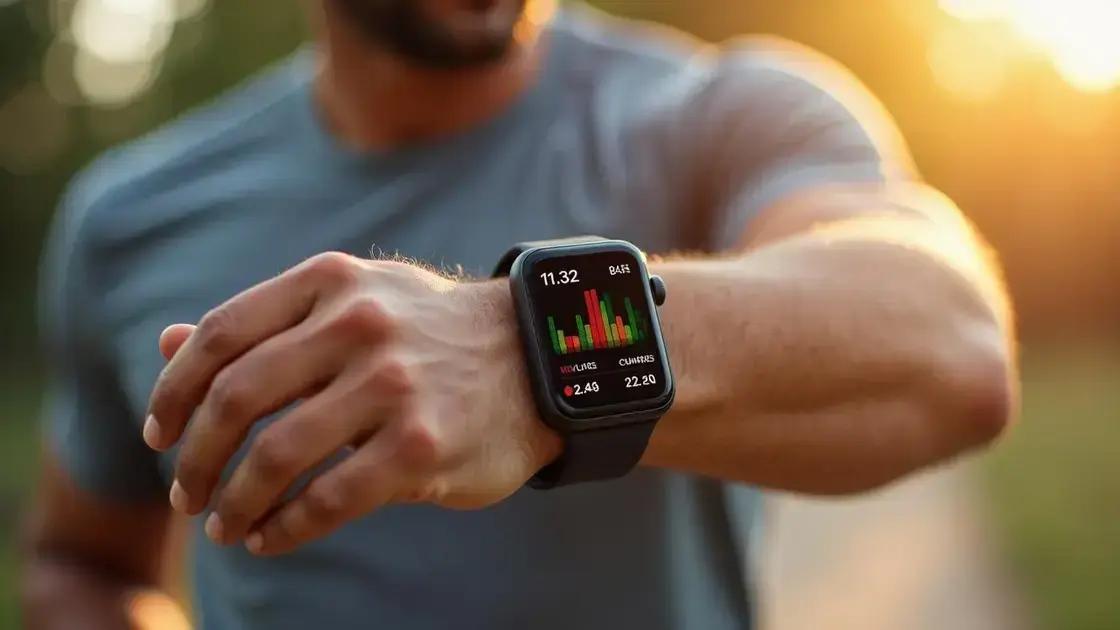Wearable technology enables men to monitor testosterone levels in real-time, empowering them to take control of their health by providing continuous insights into hormone fluctuations, improving lifestyle choices, and promoting proactive health management.
Wearable technology is revolutionizing health monitoring, especially for men concerned about testosterone levels. Real-time tracking has become essential for maintaining optimal hormonal balance, enhancing overall well-being. With advancements in wearable tech, men can now easily access vital data, empowering them to take charge of their health like never before. In this article, we will delve into how wearable tech is enabling men to monitor testosterone levels effectively and the benefits that come along with it.
Understanding Wearable Technology for Health

Wearable technology refers to devices that can be worn on the body and provide valuable health information. These gadgets are more than just fitness trackers; they integrate advanced sensors and software to monitor various physiological parameters. In the context of men’s health, wearable tech has become an essential tool for real-time health tracking.
Types of Wearable Technology
There are several types of wearable devices available, including smartwatches, fitness bands, and health monitors. Each device comes equipped with features that help users track their health metrics. For example, smartwatches often include heart rate monitors, GPS, and even sleep analysis tools. Meanwhile, specialized health monitors can measure specific hormones, including testosterone.
How Wearable Devices Function
Wearable devices typically use sensors to collect data. These sensors can measure various metrics, such as heart rate, physical activity, and sleep quality. Data is often synced with mobile applications, where users can analyze their health trends over time. This consistency allows men to monitor their testosterone levels easily and make informed decisions regarding their health.
Benefits of Wearable Technology
One significant advantage of using wearable technology is that it promotes awareness and ownership of personal health. Men can gain insights into their hormonal status, detect irregularities, and even track changes triggered by lifestyle modifications. Regular monitoring can lead to proactive management of health issues before they escalate.
The Importance of Monitoring Testosterone Levels

Monitoring testosterone levels is crucial for men’s health. Testosterone plays a vital role in various bodily functions, including muscle mass, mood regulation, and energy levels. Low testosterone can lead to several health issues, such as fatigue, depression, and decreased libido. Regularly tracking testosterone can empower men to understand their health better and make informed lifestyle changes.
Understanding Normal Levels
Testosterone levels vary by age and individual health status. Maintaining normal levels is essential for overall health and well-being. Men have different testosterone ranges, and significant deviations can indicate underlying health concerns. By monitoring testosterone levels, men can identify patterns and detect possible issues early on.
Effects of Low Testosterone
Low testosterone, or hypogonadism, can result in several symptoms. Some common signs include reduced energy, loss of muscle mass, and mood changes. Monitoring helps in recognizing these symptoms, prompting men to seek medical advice. Early detection can facilitate timely interventions, improving overall quality of life.
Benefits of Monitoring
Wearable technology simplifies the monitoring process, allowing men to access real-time data about their testosterone levels. This data can promote better decision-making regarding diet, exercise, and general lifestyle. By staying informed about hormonal changes, men can take proactive steps to enhance their health.
How Real-Time Data Benefits Men’s Health

Real-time data from wearable technology offers significant benefits for men’s health. One of the core advantages is the ability to track hormone levels consistently. This ongoing monitoring allows men to see fluctuations in testosterone and correlate them with their lifestyle choices, such as exercise, diet, and sleep patterns.
Immediate Feedback on Health Choices
Having real-time data enables men to receive immediate feedback on their health choices. For instance, if a man exercises more or changes his diet, he can quickly see how these changes affect his testosterone levels. This information promotes accountability, encouraging men to maintain healthier habits.
Enhanced Awareness of Health Issues
With continuous monitoring, men can become more aware of potential health issues. If testosterone levels drop unexpectedly, it could signal underlying health problems. Real-time data allows for quicker responses, enabling men to consult with healthcare providers sooner, which may lead to better health outcomes.
Data-Driven Decisions
Wearable tech provides a wealth of data that men can use to make informed decisions. For example, knowing the optimal testosterone levels can help men tailor their fitness routines and nutrition plans. This can lead to improved physical performance and enhanced emotional well-being, as balanced hormones contribute to heightened vitality and mood stability.
Future Trends in Wearable Tech for Hormone Tracking
![]()
The future of wearable tech for hormone tracking is promising and exciting. As technology advances, we can expect devices to become more sophisticated in monitoring hormone levels accurately and efficiently. With further integration of artificial intelligence and machine learning, wearable devices could analyze data patterns, providing personalized health insights.
Integration with Health Apps
Future wearables will likely integrate seamlessly with health and wellness applications. This integration allows users to access comprehensive health data all in one place, making it easier to track testosterone levels alongside nutrition, exercise, and sleep quality.
Improved Sensor Technology
As sensor technology evolves, future wearables will be equipped with advanced sensors that can measure hormones in real-time with greater precision. This could lead to devices that not only track testosterone but also provide insights into other important hormones affecting men’s health, like cortisol and estrogen.
Wearable Tech for Personalized Medicine
Wearable devices may help usher in a new era of personalized medicine. With continuous monitoring of hormone levels, healthcare providers can tailor treatments and interventions based on individual data, ensuring that each man receives optimal care specific to his hormonal needs.
Embracing Wearable Tech for Better Health
In conclusion, the integration of wearable technology into men’s health management offers substantial benefits. By enabling real-time monitoring of testosterone levels, these devices empower men to take control of their health journey.
Understanding how wearable tech works and its importance for hormone tracking helps men recognize the potential health challenges they may face. With continuous advancements in sensor technology and data integration, the future of wearable devices will provide even more tailored insights, enhancing personal health management.
By embracing these innovations, men can significantly improve their well-being, allowing for proactive health decisions and a better quality of life.
FAQ – Frequently Asked Questions about Wearable Tech and Testosterone Monitoring
What is wearable technology?
Wearable technology refers to devices that can be worn on the body, such as smartwatches or fitness trackers, that monitor various health metrics.
How can wearable tech help monitor testosterone levels?
Wearable tech can monitor testosterone levels in real-time, allowing men to track fluctuations and understand how lifestyle choices affect their hormonal health.
Why is monitoring testosterone levels important?
Monitoring testosterone levels is crucial for men’s health as low levels can lead to fatigue, depression, and decreased libido, and early detection of hormonal imbalances can lead to better health outcomes.
What are the benefits of real-time data monitoring?
Real-time data monitoring allows men to make informed decisions about their health, adjust their lifestyle accordingly, and recognize potential health issues earlier.
What future trends can we expect in wearable tech for hormone tracking?
Future trends include improved sensor technology, better integration with health apps, and personalized medicine approaches driven by continuous monitoring of hormone levels.
Can wearable devices provide insights beyond testosterone tracking?
Yes, as technology evolves, future devices may monitor multiple hormones, providing comprehensive insights into overall health and wellness.













